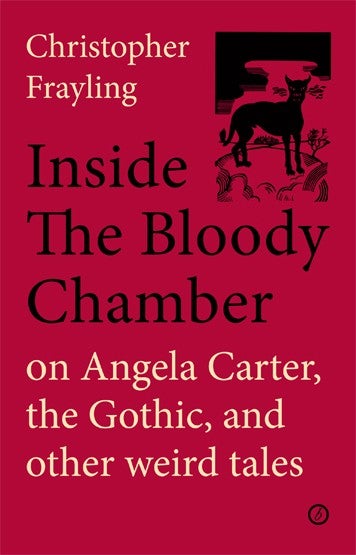Inside the Bloody Chamber: on Angela Carter, the Gothic, and Other Weird Tales, by Christopher Frayling - book review
A friend’s reflections on Angela Carter’s subversive intent in her fiction

since her premature death at the age of 51 in 1992, Angela Carter’s reputation as perhaps the leading English exponent of modern gothic has become assured. Her story collection The Bloody Chamber – which includes the tale that became Neil Jordan’s film The Company of Wolves – is currently a school set text, and her work is taught in universities all over the world.
This, by her friend Christopher Frayling, doesn’t quite do what it says on the tin; one might have expected more about Carter from the way in which it is presented. However, it begins with an autobiographical memoir in which Frayling recalls their table talk during the bohemian Seventies, when Carter was an unknown writer living in Bath, with squatters next door, and when Frayling himself – now an establishment grandee, a knight of the realm and a former chair of the Arts Council – was a young academic with a penchant for vampire stories.
He lent her his book collection on the subject; she transformed him into the character of “Hero” in her story “The Lady in the House of Love”. Occasional quotations from her journal are rare treats: “Nosferatu, with his coffin on his shoulder, his fingers like roots, tuberous fingers, the head is like a phallus, with one eye blacked out… a night-sized hallucination, a figure inscribed in the corner of sleep”. Passages such as this make us want more of the private Carter.
Astonishingly from today’s perspective, gothic as a genre – which has since spawned, at the last count, 54 university courses worldwide – was then considered so marginal that Bath council rejected a proposal, cooked up by Frayling and Carter, to erect a plaque to Mary Shelley to commemorate her stay in the city, where she wrote much of Frankenstein in 1816-1817.
Back in the 1970s, the spirit of F R Leavis – with his exclusive canon of dead white males – ruled over English studies. Carter’s attraction to narratives of unreason, and her borrowings from popular culture, were genuinely subversive, as was her deconstructive attitude to gender stereotypes.
The rest of this book – which is beautifully produced and illustrated with stunning woodcuts – comprises a clutch of elegantly written pieces by Frayling himself, on topics for which he and Carter had a shared enthusiasm, from Fuseli (there was a reproduction of his iconic picture The Nightmare on the wall of Freud’s waiting-room in Vienna), to Hammer horror films and Hitchcock (Frayling recalls meeting the director as a student), and the myth of Jack the Ripper in late 19th-century literature.
Cultural criticism of this kind was transgressive in the world of Leavis; it is now the norm. In a thoughtful and mildly melancholic epilogue, Frayling touches fleetingly on what it might mean when the avant-garde becomes the orthodoxy.
He sounds a little anxious. It is certainly worth asking how it is that the cultural liberalisation desired by Seventies’ subversives has indeed come to pass, but in tandem with an economic neo-liberalism far removed from their left-wing idealism.
Join our commenting forum
Join thought-provoking conversations, follow other Independent readers and see their replies
Comments
Bookmark popover
Removed from bookmarks